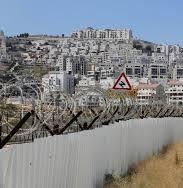Orthodox Jews Counted Among Settler Population
The settler population is growing twice as fast as the rest of the country every year, and the ultra-Orthodox community is responsible for approximately half its annual growth, according to Haaretz's analysis of Interior Ministry figures for 2006. In the last year, the settler population has grown by 5.45 percent, from 260,932 to 275,156.
Without the ultra-Orthodox community the West Bank settlements's growth is 3.7 percent, only a little more than the natural growth the settlements would see, which stands at 3.5 percent.
The growth rate in the ultra-Orthodox Beitar Ilit and Modi'in Ilit is higher than most places in Israel. Modi'in Ilit's population, some 40,000, grows annually by about 11 percent (this year it has grown by 12.5 percent).
Beitar Ilit's population, some 35,000, grows annually by some 10 percent - five to six times more than Jerusalem and Tel Aviv's population growth respectively and twice as much as the growth of many other settlements.
By the end of June, 72,106 people - more than a quarter of the West Bank settlers - were concentrated in Beitar Ilit, Modi'in Ilit and Kochav Yaakov, another ultra-Orthodox settlement, according to Interior Ministry figures.
Most of the ultra-Orthodox settlers - young couples or young families with numerous children - do not live in the West Bank for ideological reasons. They moved to the settlements due to the soaring real estate prices in the ultra-Orthodox neighborhoods of Jerusalem and Bnei Brak, which created an acute housing shortage.
The local authorities predict that in 10 to 15 years Betar Ilit's population may consist of some 17,500 families totaling some 100,000 residents. Today the town has 5,828 occupied housing units, 1,102 units are under construction and another 5,800 are being planned. Modi'in Ilit has 6,800 occupied housing units and its population is expected to reach 150,000 in the near future.
Beitar Ilit and Modi'in Ilit are in the settlement bloc earmarked to be annexed to Israel, according to this government and the plans of previous ones. Before retiring, former GOC Central Command Yair Naveh signed an order joining Beitar Ilit's area with Jerusalem's municipal area. Ilit, the region's busiest transport company, makes some 400 trips to and from Jerusalem daily.
Modi'in Ilit, which is on Highway 443 between Tel Aviv and Jerusalem, is also near Highway 6 and will be on the future Tel Aviv-Modi'in-Jerusalem railway line.

The author's words that "most of the ultra-Orthodox settlers...do not live in the West Bank for ideological reasons" is an understatement. Actually these are Jews who are opposed to the existence of the Zionist state. However, the appearance of these statistics should serve as their wake-up call to realize that the world - both Zionist and non-Jewish - sees them as part of the West Bank settler population, the extremist wing of the Zionist movement. A person can believe one thing but with his actions make a very different statement. Jews who have chosen to live in Kiryas Sefer and Beitar, however good their intentions may be, should be aware of the way their actions are being interpreted. Indeed, the Satmar Rebbe had great foresight when he warned his followers against living or even visiting areas conquered by the Zionists in 1967.